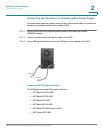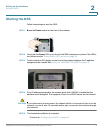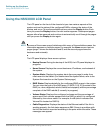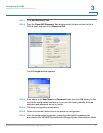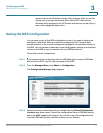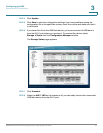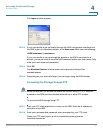
Configuring the NSS
Running the Quick Setup Wizards to Configure the NSS
NSS3000 Series Network Storage System Getting Started Guide 16
3
Running the Quick Setup Wizards to Configure the NSS
When you log into the configuration interface for the first time, the Initial Setup
wizard appears. The setup wizard steps you through the basic configuration to
create a RAID, volume, share, user, to set the Home Directory location, set the
time, and so on. You can access this wizard at any time from the Manager Menu of
the configuration interface.
NOTE if you save any configuration settings before running the wizard, running the
wizard will erase any saved data. For example, if you configure a RAID and
then run the wizard, the RAID will be deleted.
These wizards are also available from the Manager Menu of the configuration
interface. Select the wizard and then follow the onscreen instructions.
• IP Camera Options (Optional): You can run either the FTP or CIFS wizards
to set up the NSS to store videos from IP surveillance cameras. The type of
wizard you choose depends on the way the camera transfers the video
clips. Before you run the wizard make sure that you create a RAID array, a
volume, and add any users that you want to grant access to the surveillance
videos. After running the wizard, map a network drive to the share on the PC
running the camera utility and configure the camera utility to save the video
to the mapped network drive.
NOTE You only need to run the wizard once. You must configure each
camera to output the video to the configured share
- FTP: Run this wizard if the cameras are set up to transfer motion-
triggered clips through FTP. The wizard creates a single user and FTP
share for the cameras. The videos are then saved within the FTP share
which contains a subfolder dedicated to each camera. After you run the
wizard, you must configure each camera to output the video to the
configured NSS share. Use the information summarized on the last page
of the wizard to set up the cameras through their configuration interface.
- CIFS: Run this wizard if the cameras have a Windows utility program that
lets you save the streaming video to a local drive (or in this case, the
NSS) and then view the video from its saved location. The wizard
creates a single user and share for all cameras that are configured to



